Forums
- Forums
- Duggy's Reference Hangar
- USAAF / USN Library
- Vought V-173 & XF5U
Vought V-173 & XF5U
Post a reply
- Go to Previous topic
- Go to Next topic
- Go to Welcome
- Go to Introduce Yourself
- Go to General Discussion
- Go to Screenshots, Images and Videos
- Go to Off topic
- Go to Works in Progress
- Go to Skinning Tips / Tutorials
- Go to Skin Requests
- Go to IJAAF Library
- Go to Luftwaffe Library
- Go to RAF Library
- Go to USAAF / USN Library
- Go to Misc Library
- Go to The Ops Room
- Go to Made in Germany
- Go to Campaigns and Missions
- Go to Works in Progress
- Go to Juri's Air-Raid Shelter
- Go to Campaigns and Missions
- Go to Works in Progress
- Go to Skinpacks
- Go to External Projects Discussion
- Go to Books & Resources
-
8 years agoSun Nov 20 2022, 03:48pmDuggy
 Main AdminThe Vought V-173 "Flying Pancake" designed by Charles H. Zimmerman was an American experimental test aircraft built as part of the Vought XF5U "Flying Flapjack" World War II United States Navy fighter aircraft program.
Main AdminThe Vought V-173 "Flying Pancake" designed by Charles H. Zimmerman was an American experimental test aircraft built as part of the Vought XF5U "Flying Flapjack" World War II United States Navy fighter aircraft program.
Both the V-173 and the XF5U featured an unorthodox "all-wing" design consisting of flat, somewhat disk-shaped bodies (hence the name) serving as the lifting surface. Two piston engines buried in the body drove propellers located on the leading edge at the wingtips.
Design and development
In the 1930s, Charles H. Zimmerman was a noted aeronautical engineer who advocated the concept of "discoidal" aircraft, the so-called "Zimmer Skimmer" and worked on a variety of projects on his own and with the Vought company. After testing using scale models, including a remotely controlled, electrically powered large-scale model, designated the Vought V-162, the US Navy approached Zimmerman and offered to fund further development. Data and concept documentation was given to the Navy in 1939, with wind tunnel tests on full-scale models being completed in 1940-1941.


The original prototype, designated the V-173 (Flying Pancake), was built of wood and canvas and featured a conventional, fully symmetrical aerofoil section (NACA 0015). Designed as a "proof-of-concept" prototype, the initial configuration V-173 was built as a lightweight test model powered by two 80 hp (60 kW) Continental A-80 engines turning F4U Corsair propellers. These were replaced by a pair of specially modified 16 ft 6 in three-bladed units. A tall, fixed main undercarriage combined with a small tailwheel gave the aircraft a 22? "nose-high" angle.
The disc wing design featured a low aspect ratio that overcame the built-in disadvantages of induced drag created at the wingtips with the large propellers actively cancelling the drag-causing tip vortices. The propellers were arranged to rotate in the opposite direction to the tip vortices, allowing the aircraft to fly with a much smaller wing area. The small wing provided high maneuverability with greater structural strength.
In January 1942, BuAer requested a proposal for two prototype aircraft of an experimental version of the V-173, known as the VS-135. The development version, the Vought XF5U-1, was a larger aircraft with all-metal construction, and was almost five times heavier.
Operational history
The first flight of the V-173 was on 23 November 1942 with Vought Chief Test Pilot Boone Guyton at the controls. The aircraft's most significant problem concerned its complicated gearbox that routed power from the engines to its two long propeller shafts. The gearbox produced unacceptable amounts of vibration in ground testing, delaying the aircraft's first test flight for months. Flight testing of the V-173 went on through 1942 and 1943 with 190 flights, resulting in reports of UFOs from surprised Connecticut locals. Charles Lindbergh piloted the V-173 during this time and found it surprisingly easy to handle and exhibiting impressive low-speed capabilities. On one occasion, the V-173 was forced to make an emergency landing on a beach. As the pilot made his final approach, he noticed two bathers directly in his path. The pilot locked the aircraft's brakes on landing, causing the aircraft to flip over onto its back. Remarkably, the airframe proved so strong that neither the plane nor the pilot sustained any significant damage.
The developmental V-173 made its last flight 31 March 1947. In 131.8 hours of flying over 190 flights, Zimmerman's theory of a near-vertical takeoff- and landing-capable fighter had been proven. The V-173 is now part of the Smithsonian collection at the Paul E. Garber Preservation, Restoration, and Storage Facility in Silver Hill, Maryland. It was restored at the Vought Aircraft plant in Grand Prairie, Texas before going back on display. As of April 2012 it is on loan to the Frontiers of Flight Museum in Dallas, Texas.
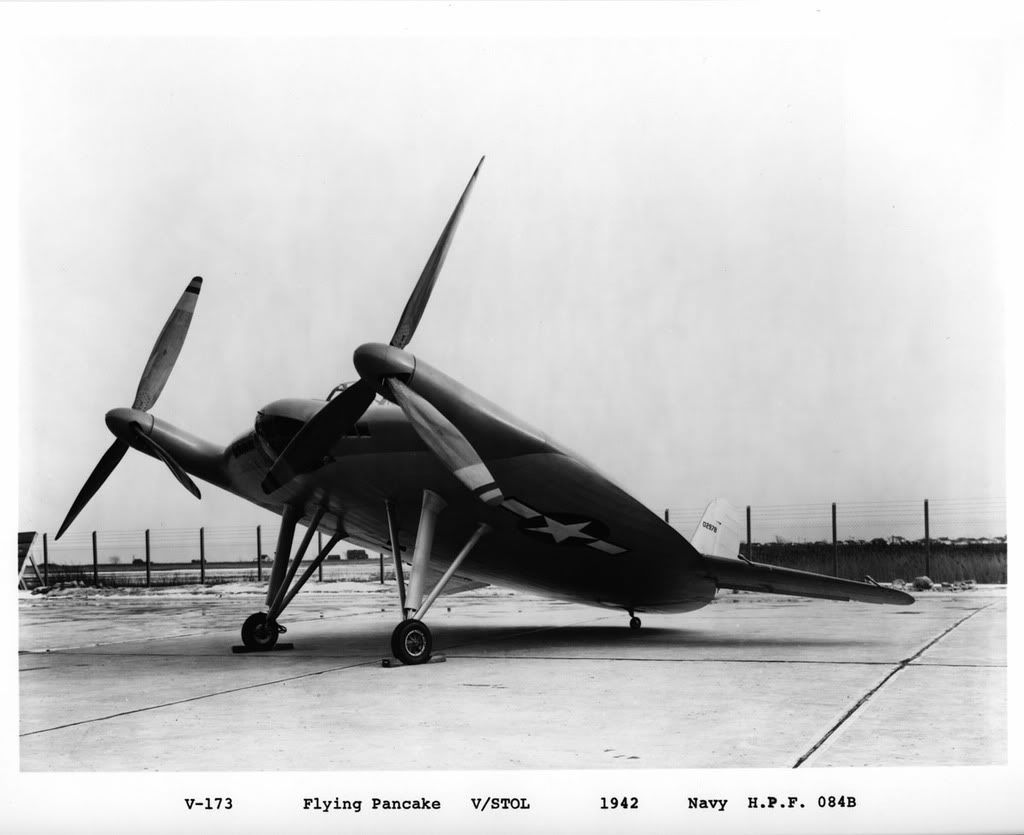

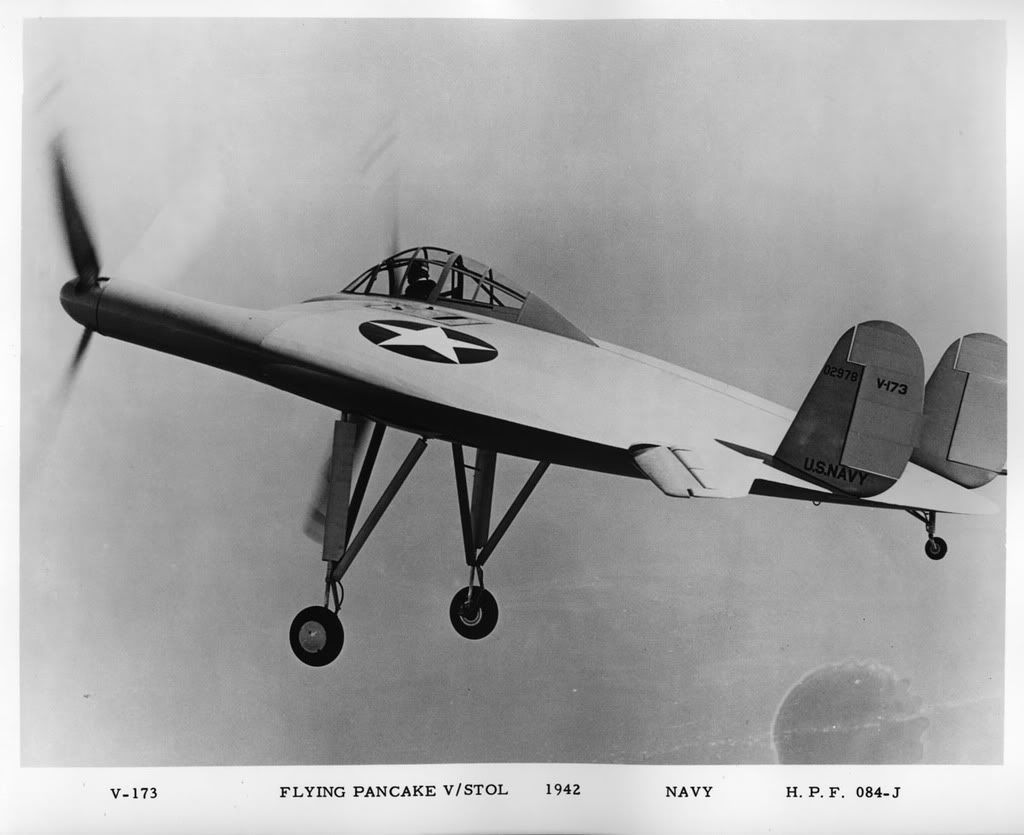
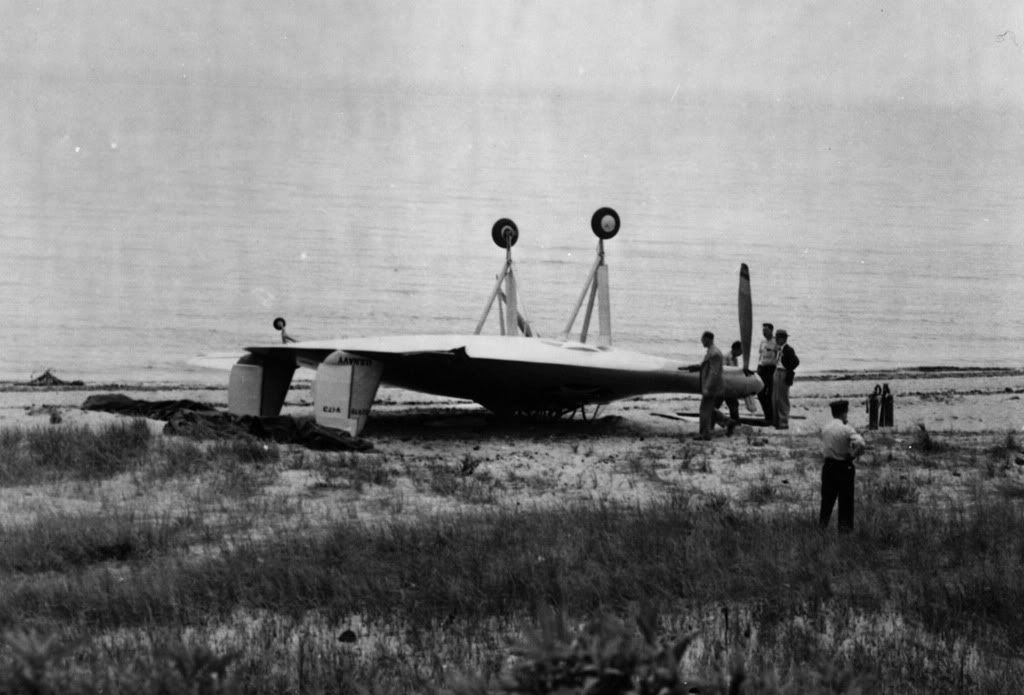


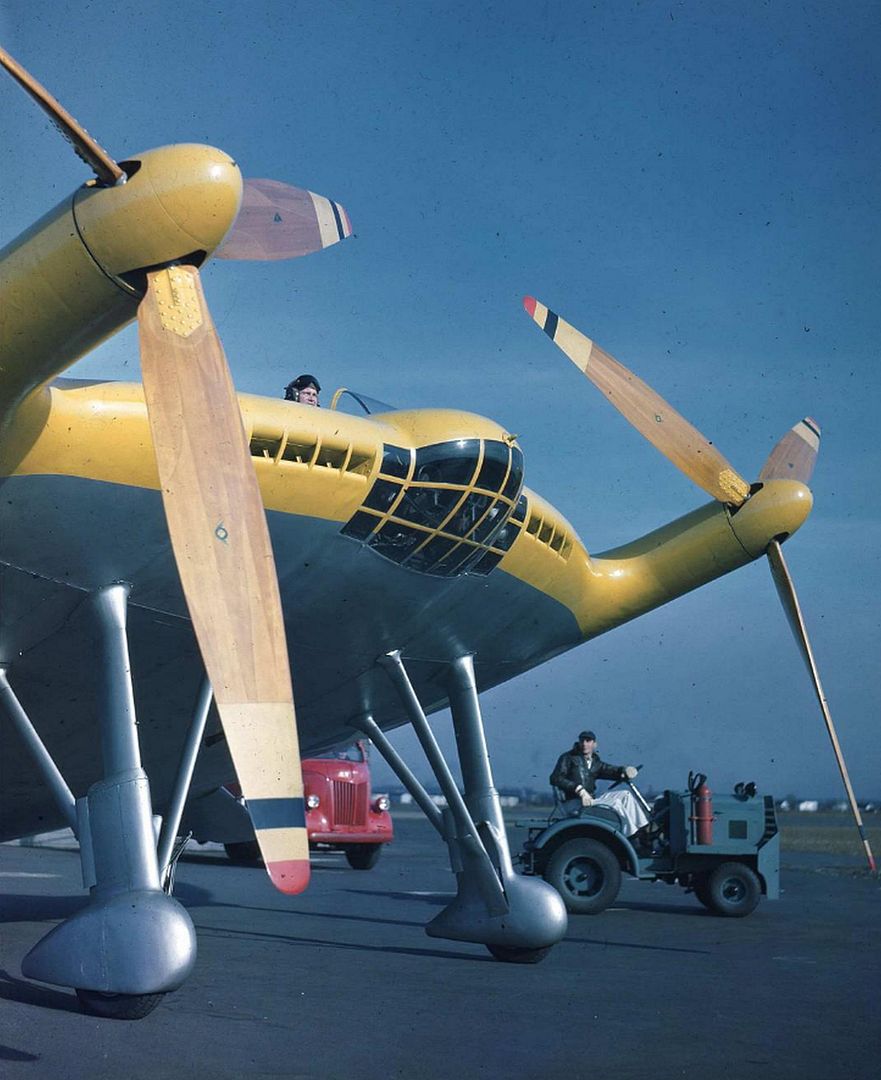
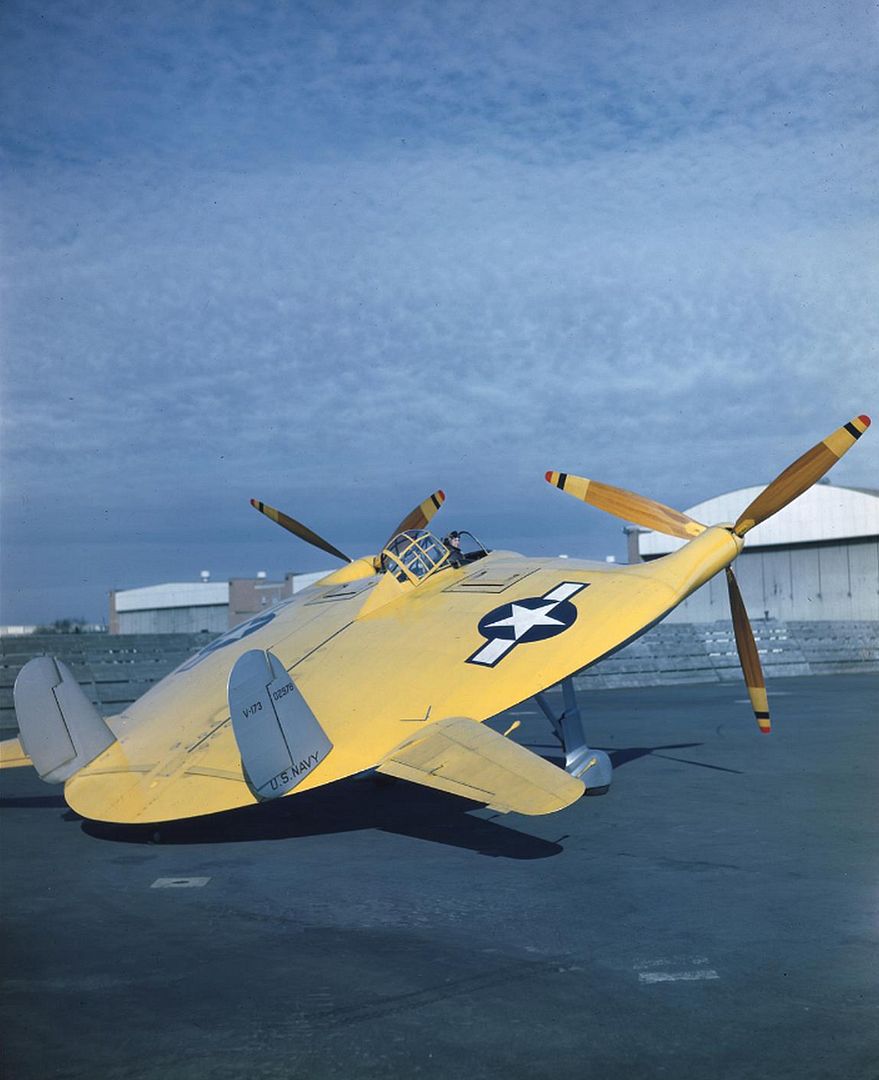
General characteristics
Crew: One, pilot
Length: 26 ft 8 in (8.128 m)
Wingspan: 23 ft 4 in (7.1 m)
Height: 14 ft 9 in (4.51 m)
Wing area: 427 ft2 (44.2 m2)
Loaded weight: 2,258 lb (1,024 kg)
Powerplant: 2 ? Continental A-80 horizontally opposed, four-cylinder engines, 80 hp (60 kW each) each
Performance
Maximum speed: 138 mph (222 km/h)
Rate of climb: to 5,000 ft in 7 min (1,100 m in 5 min)
Vought XF5U
Design and development
A developed version of the original V-173 prototype, the XF5U-1 was a larger aircraft. Of all-metal construction, it was almost five times heavier, with two 1,600 hp (1,193 kW) Pratt & Whitney R-2000 radial engines. The configuration was designed to create a low aspect ratio aircraft with low takeoff and landing speeds but high top speed.
Below wind tunnel model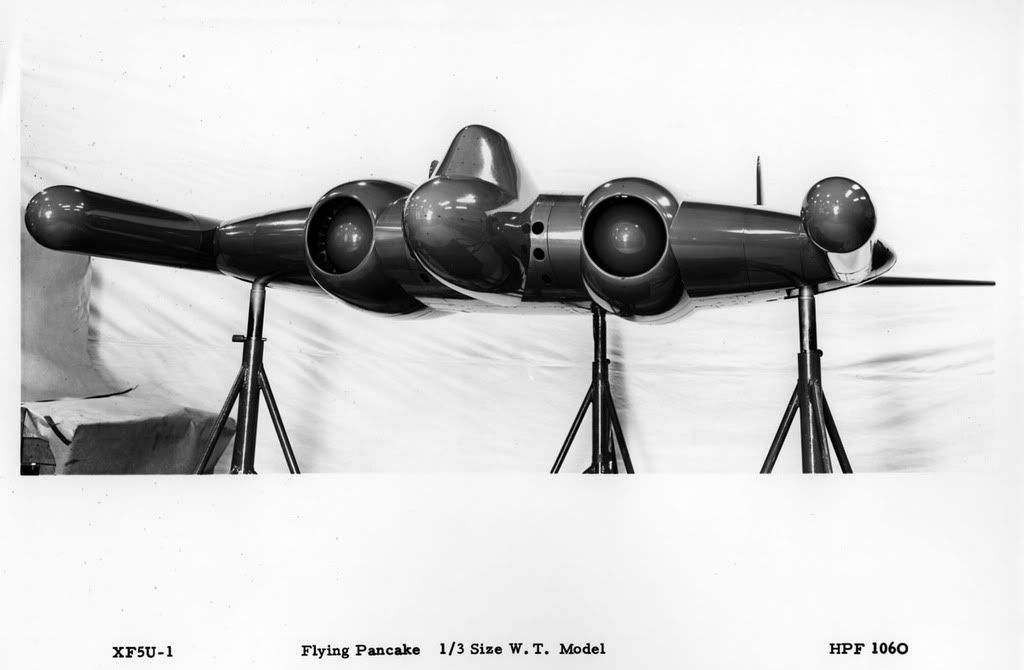
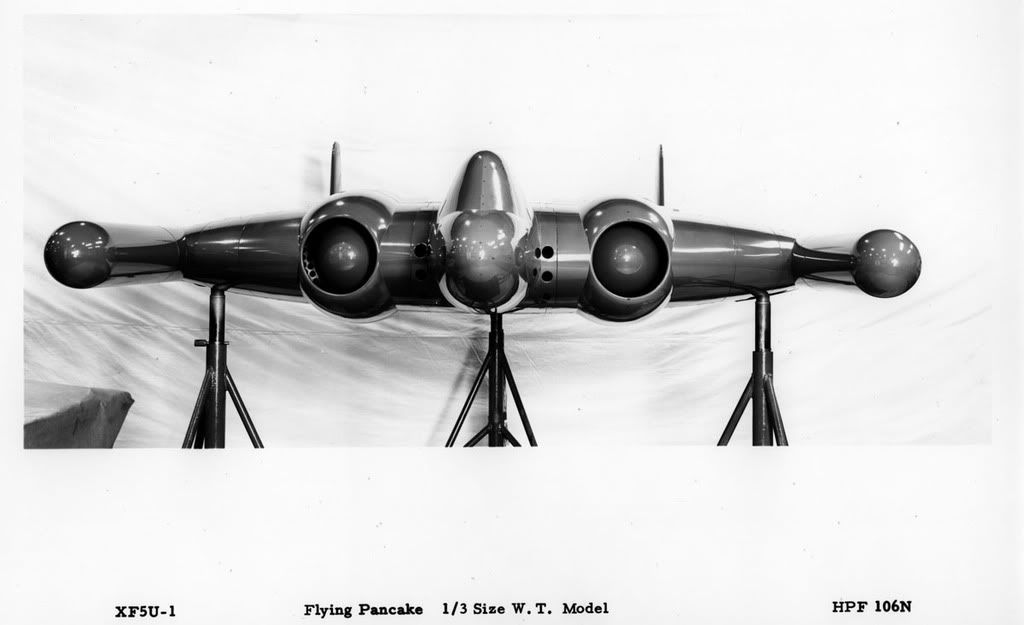
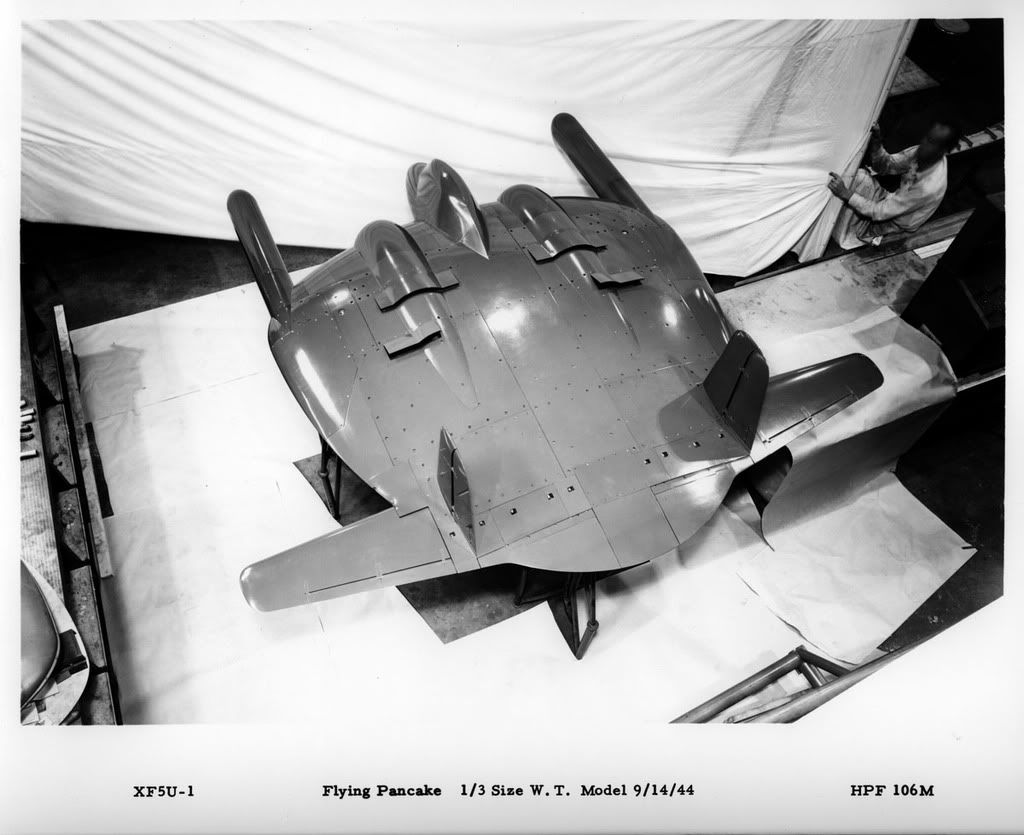
Normally, a wing with such a low aspect ratio will suffer from very poor performance due to the degree of induced drag created at the wingtips, as the higher pressure air below spills around the wingtip to the lower-pressure region above. In a conventional aircraft, these wingtip vortices carry a lot of energy with them and hence create drag. The usual approach to reducing these vortices is to build a wing with a high aspect ratio, i.e. one that is long and narrow. However, such wings compromise the maneuverability and roll rate of the aircraft, or present a structural challenge in building them stiff enough. The XF5U attempted to overcome the tip vortex problem using the propellers to actively cancel the drag-causing tip vortices. The propellers are arranged to rotate in the opposite direction to the tip vortices, with the aim of retaining the higher-pressure air below the wing. With this source of drag eliminated, the aircraft would fly with a much smaller wing area, and the small wing would yield high maneuverability with greater structural strength.
Below Mockup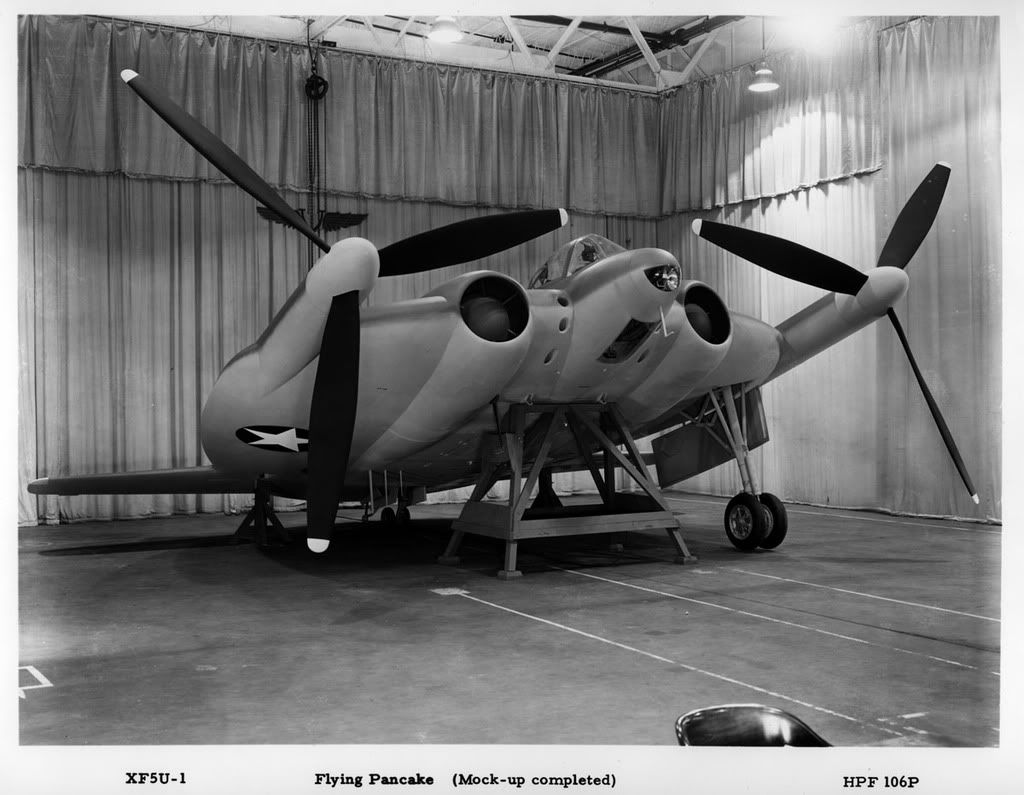
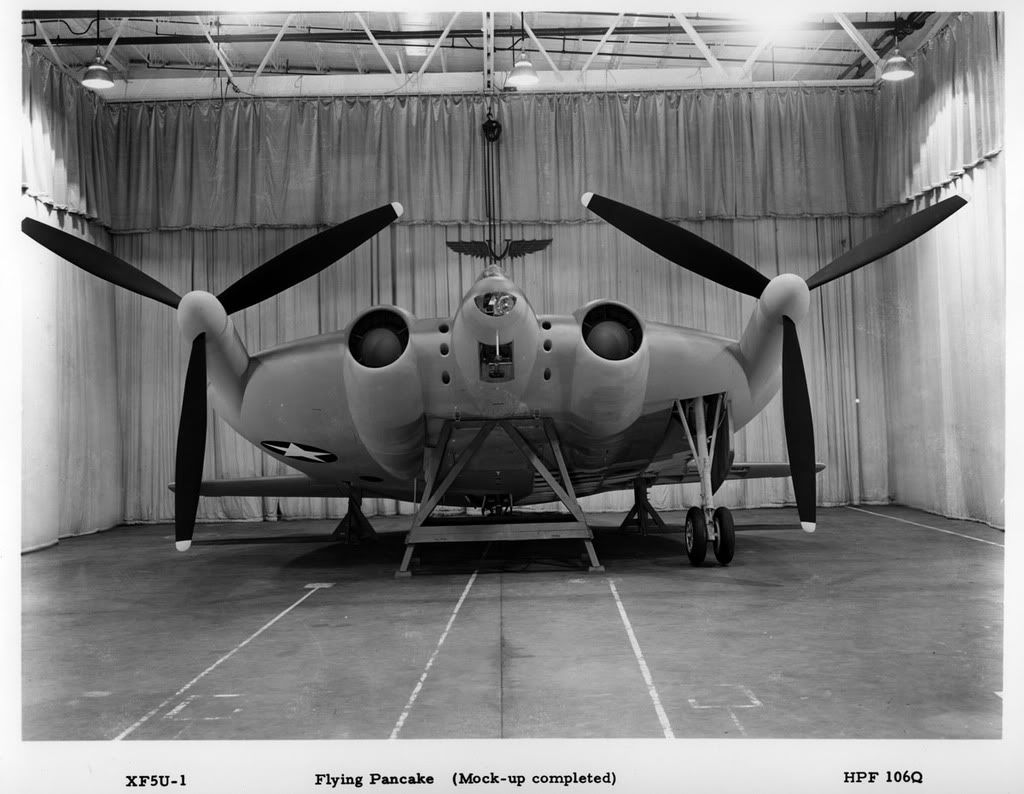
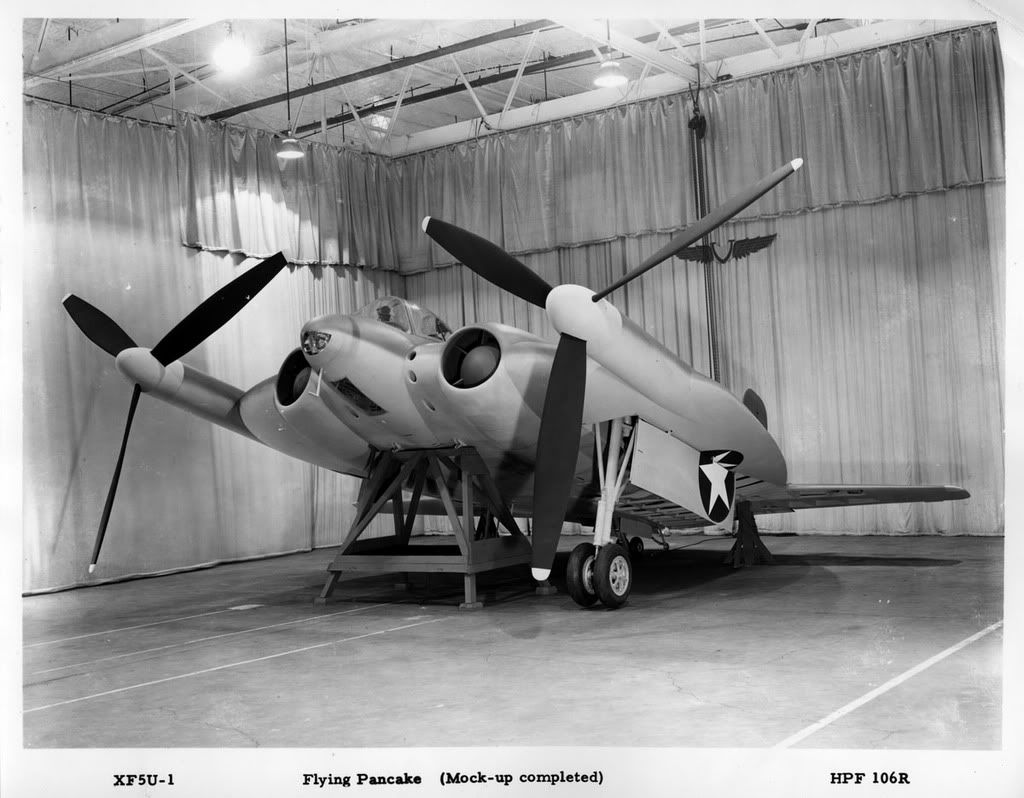
The propellers envisioned for the completed fighter ? unlike the torque-reducing counter-rotating propellers of the V-173 design ? were to have a built-in cyclic movement like a helicopter's main rotor, with a very limited ability to shift their center of lift up and down to aid the aircraft in maneuvering. An ejection seat was fitted to allow the pilot to clear the massive propellers in the event of an in-flight emergency. Although the prototype was unarmed, a combination of machine guns and cannons would have been installed under the nose.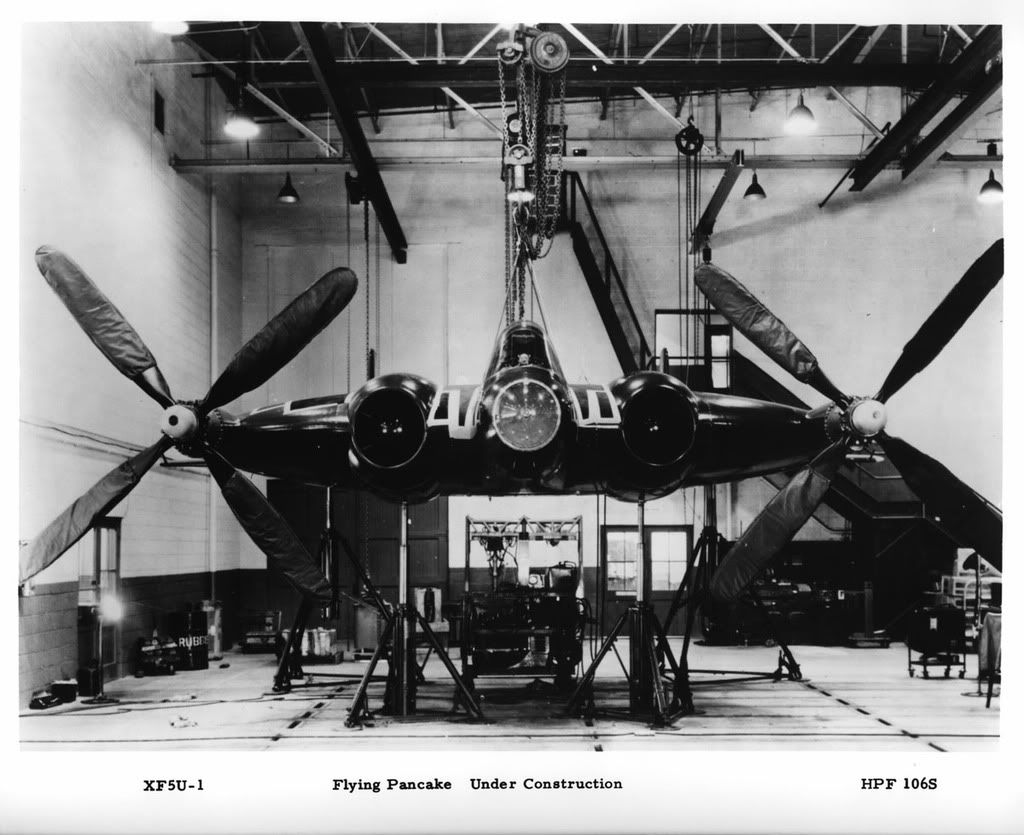
Testing and evaluation
The XF5U design was promising: specifications given at the time promised great maneuverability and speeds up to 550 mph (885 km/h).[ However, it came at the time when the United States Navy was switching from propeller driven to jet propelled aircraft. By 1946, the XF5U-1 project was already long over its expected development time, and well over budget.With jet aircraft coming into service, the Navy finally canceled the project on 17 March 1947, and the prototype aircraft (V-173) was transferred to the Smithsonian Museum for display. Although two aircraft were constructed, a lone XF5U-1 underwent ground runs but never overcame vibration problems. Taxi trials at Vought's Connecticut factory culminated in short "hops" that were not true flights. The only completed XF5U-1 proved to be so structurally solid that it had to be destroyed with a wrecking ball.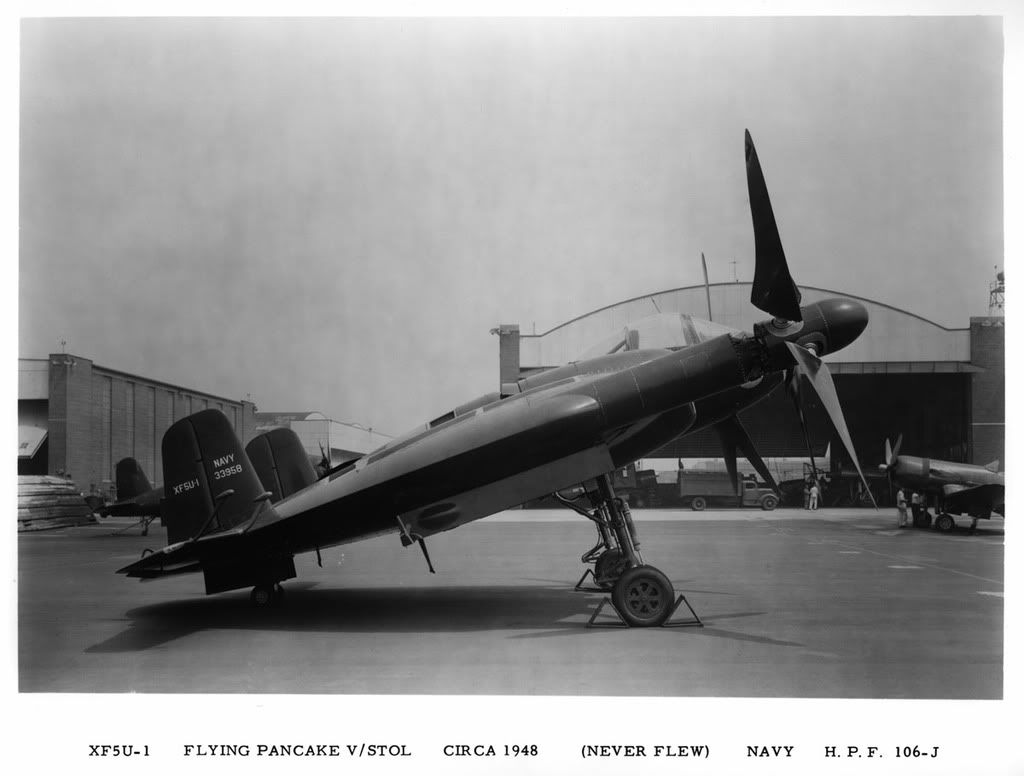
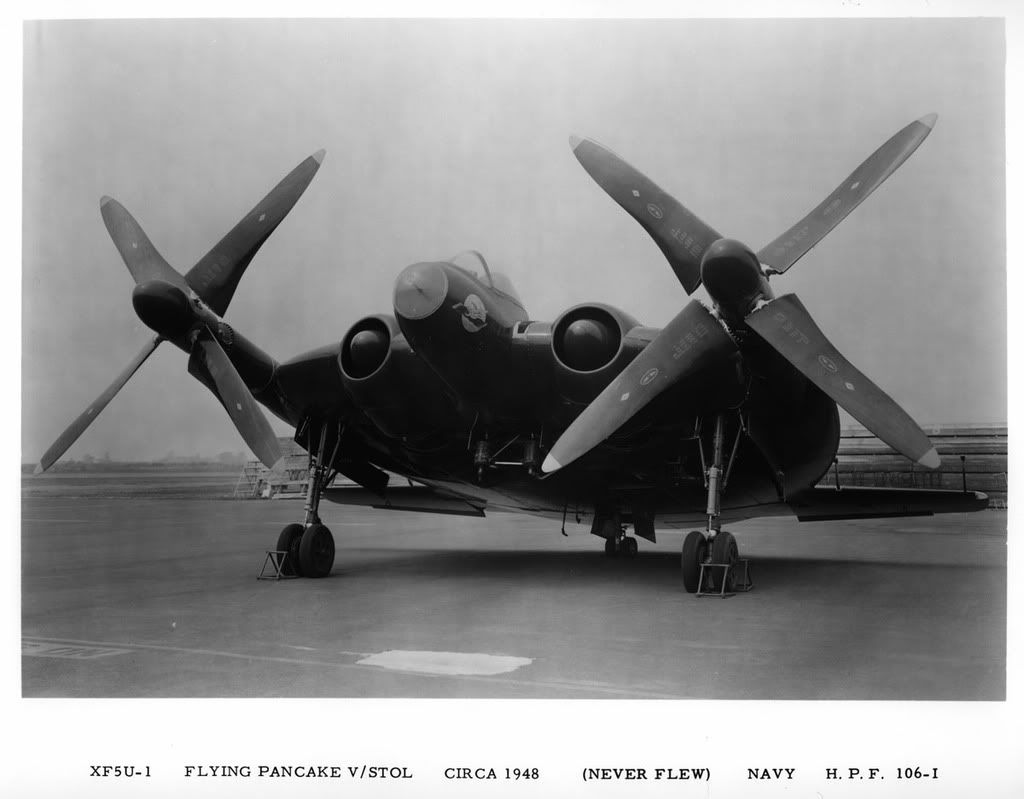
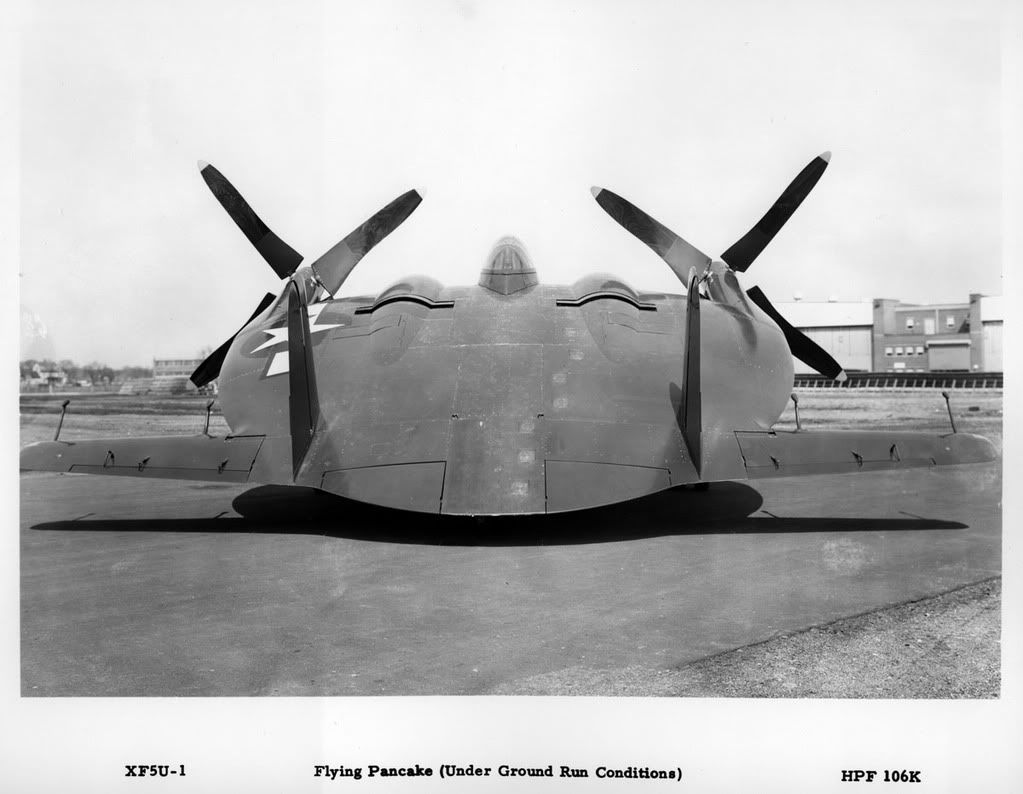
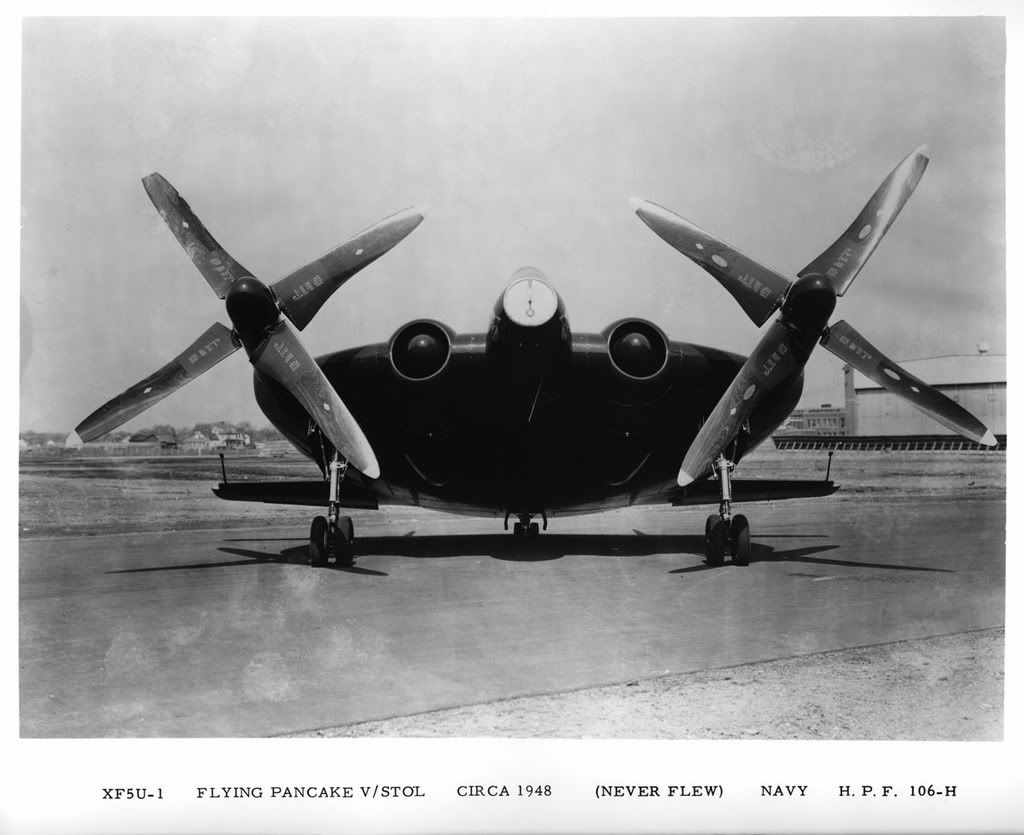
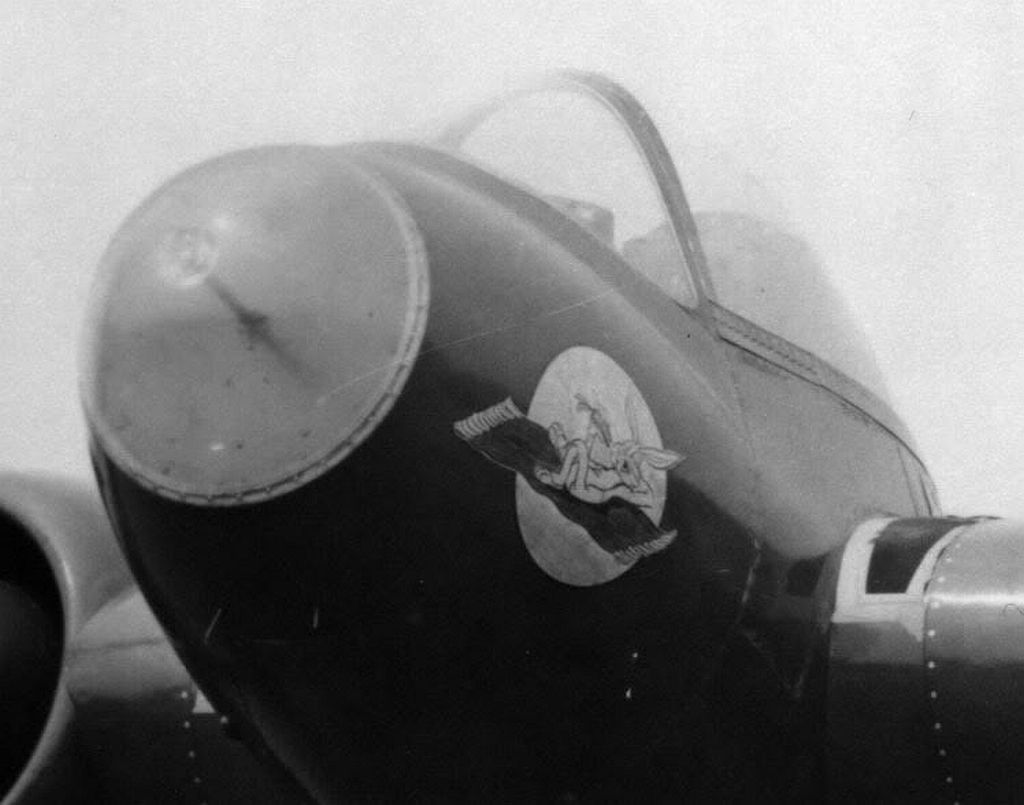

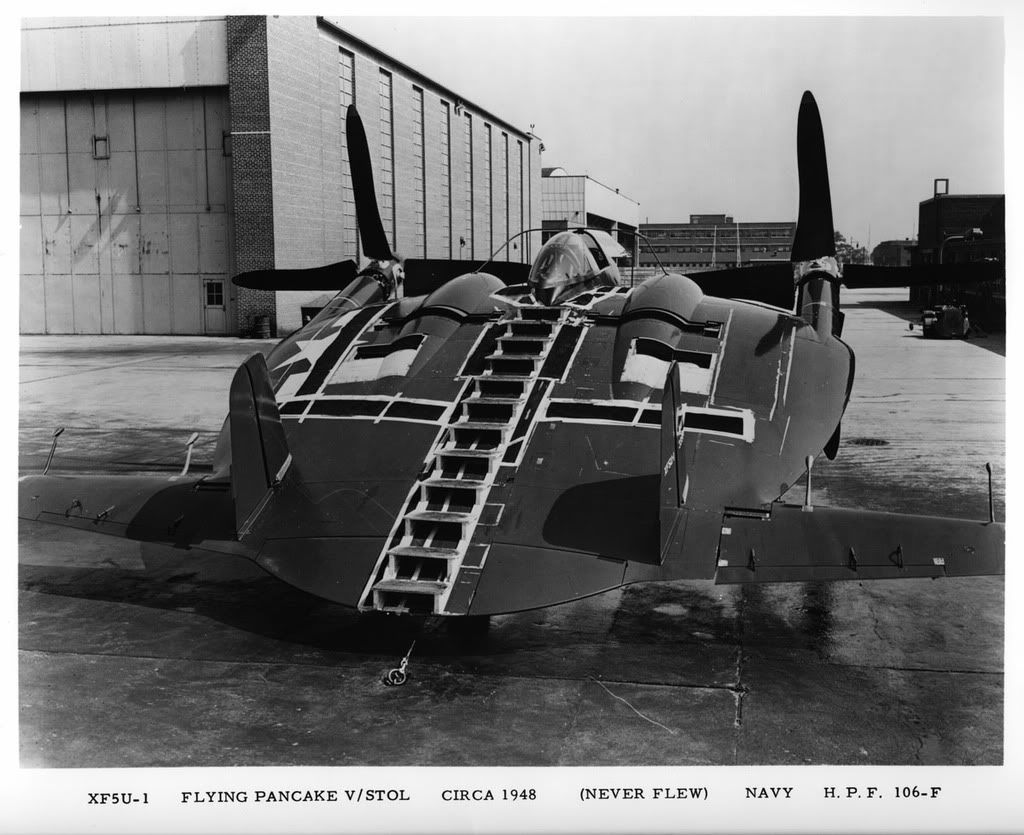
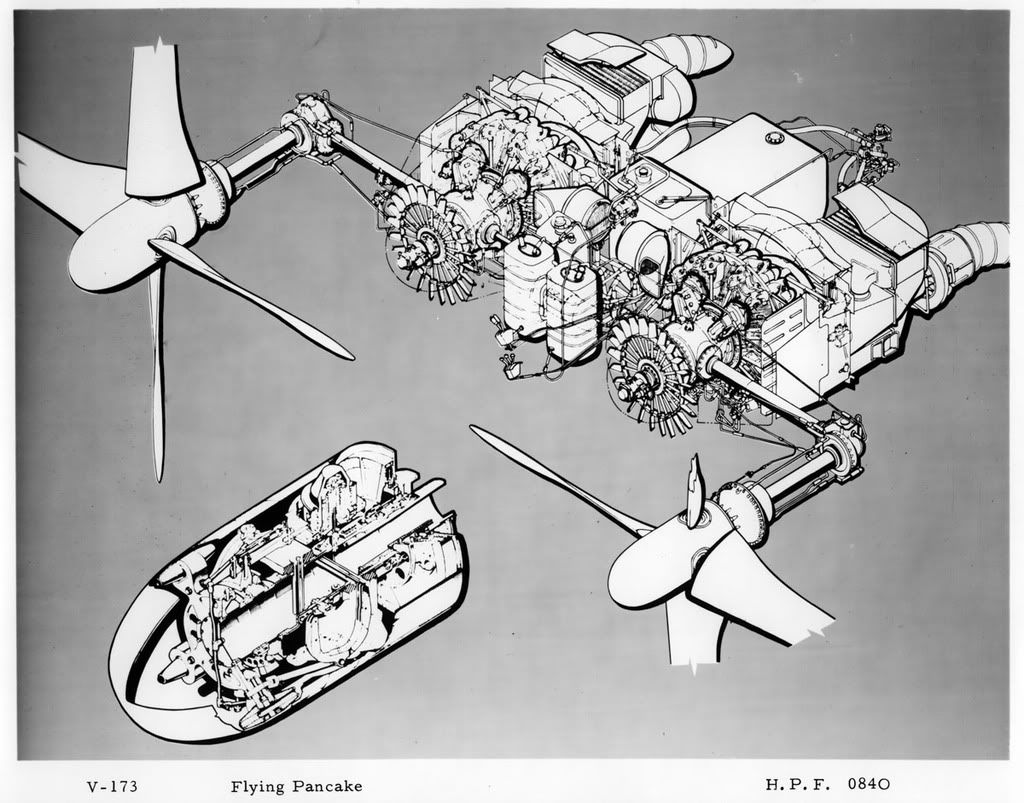
General characteristics
Crew: One, pilot
Length: 28 ft 7 in (8.73 m)
Wingspan: 32 ft 6 in (9.91 m)
Height: 14 ft 9 in (4.50 m)
Wing area: 475 ft? (44.2 m?)
Empty weight: 13,107 lb (5,958 kg)
Loaded weight: 16,722 lb (7,600 kg)
Max. takeoff weight: 18,772 lb (8,533 kg)
Powerplant: 2 ? Pratt & Whitney R-2000-7 radial engine, 1,350 hp (1,007 kW) each
Performance
Maximum speed: 477 knots / 550 mph at 28,000 ft (estimated)[8] (765 km/h at 8,534 meters)
Range: 1,064 miles (1,703 km)
Service ceiling: 34,492 ft (10,516 m)
Rate of climb: 3,000 ft/min (914 m/min)
Wing loading: 35 lb/ft? (172 kg/m?)
Power/mass: 0.16 hp/lb (0.27 kW/kg)
Armament
6 ? .50 machine guns or 4 ? 20 mm cannon
2 ? 1000 lb. bombs
Post a reply
- Go to Previous topic
- Go to Next topic
- Go to Welcome
- Go to Introduce Yourself
- Go to General Discussion
- Go to Screenshots, Images and Videos
- Go to Off topic
- Go to Works in Progress
- Go to Skinning Tips / Tutorials
- Go to Skin Requests
- Go to IJAAF Library
- Go to Luftwaffe Library
- Go to RAF Library
- Go to USAAF / USN Library
- Go to Misc Library
- Go to The Ops Room
- Go to Made in Germany
- Go to Campaigns and Missions
- Go to Works in Progress
- Go to Juri's Air-Raid Shelter
- Go to Campaigns and Missions
- Go to Works in Progress
- Go to Skinpacks
- Go to External Projects Discussion
- Go to Books & Resources
